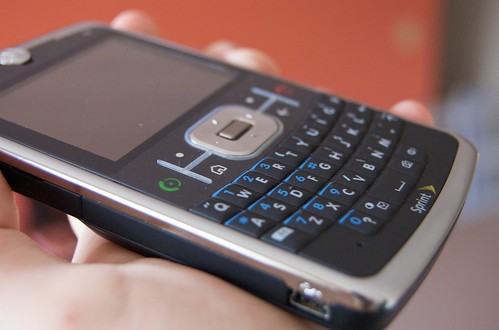 In the schools my children attend, mobile phones are not welcome. The regional district school board is jamming the genie back into the lamp, even though the use of handheld technology is ubiquitous in the real world. Rather than restrict the use of this technology, educators (and their students) would be better served, if they were actually to be encouraged to use this technology in their classrooms.
In the schools my children attend, mobile phones are not welcome. The regional district school board is jamming the genie back into the lamp, even though the use of handheld technology is ubiquitous in the real world. Rather than restrict the use of this technology, educators (and their students) would be better served, if they were actually to be encouraged to use this technology in their classrooms.How can cell phones be used for education?
First, we have to realize that many cell phones have the many embedded tools: clock, calendar, camera, voice recorder, text messaging. Some cell phones also include access to the World Wide Web and GPS technology.
Recognizing that relatively few educators already leverage tools likeGooglemaps, Wikipedia, and today's Front page news.... How will we handle it when "all of the information in the world" arrives in student backpacks on a daily basis?
The inclination is to think of the Web as one way communication, but teachers need to recognize that handheld devices encourage participation in content creation as much as content consumption. The mobile phone provides the potential to teach about copyright; content creation; protection of privacy; ethical use and much more. So how do we go about teaching students about appropriate online participation?
Documenting Learning
Field trips, experiments, and other learning experiences can be shared with a global audience with camera phones (audio and/or video). Many ideas for using mobile phones can be found at The Mobile Learner, Wes Fryer's wiki, or Thinking Machine. Evolving tools like Jott and Utterz allow automatic voice to text posting to blogs, wikis, or social networks. If you already use Voicethread, you may be interested in the untethered use of this tool:
Liberty Science Centre in New Jersey, actually has exhibits that provide audio commenting through recordings available by phone call. Can students create such content? Can you see the day when road signs, historic markers, and public buildings include phone numbers to access information? What about copying such information to GoogleMaps?
Large Scale Mobile Learning
Abiline Christian University in Texas, provides students with iPhone technology. Many other post-secondary institutions like Berkeley, Stanford, Yale, Penn State, Texas A&M, Duke, Queens, MIT... are leveraging iTunes U. Will this soon be the norm? What about iTunes HS, or iTunes Elementary?!
What are we worried about?
Students filming lessons? Students Googling to correct teacher errors? Students communicating with one another for social reasons? Whatever the concerns, the appropriate use of handheld computing technology needs to be modeled in the classroom. In preparing students for the real world, is teaching handheld technology skills more relevant than cursive writing; long division; spelling tests, the memorization of world capitals...?
More to follow on Monday's Teacher 2.0 Podcast.
Photo credit: Benjamin Golub




0 comments:
Post a Comment